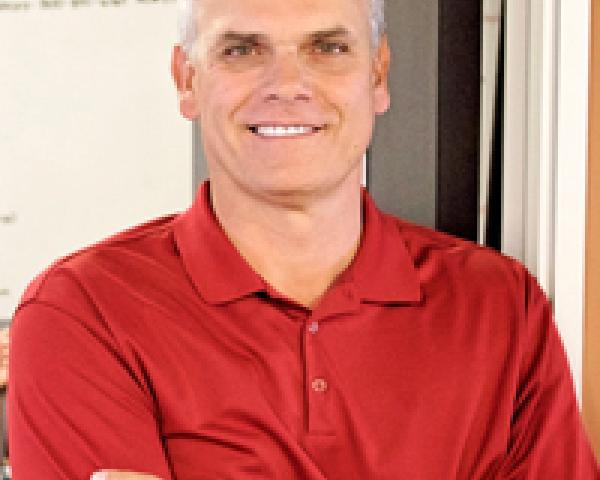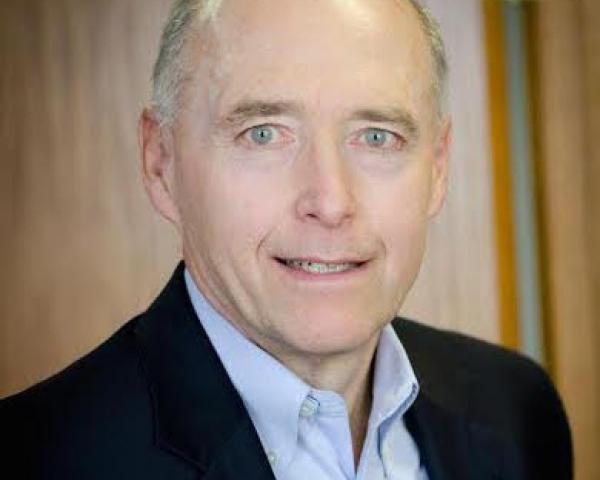- $0 Co-pays for routine care (the “routine 90%”):
- Stop-loss insurance for non-routine services (the “other 10%”):
- Plan design that guides and rewards
- Data analytics
- Free protection and support
Small- and medium-sized businesses really can avoid overpaying, lowering health costs and gaining a competitive edge.

Get Involved
Our authors are what set Insurance Thought Leadership apart.
|
Partner with us
We’d love to talk to you about how we can improve your marketing ROI.
|

David Berg is co-founder and chairman of the board of Redirect Health. He helps oversee operations and develops innovative ways to enhance the company’s processes and procedures for identifying the most cost-efficient, high-quality routes for common healthcare needs.
Why is there so much variability among workers for severity and duration of disability, given similar injuries? Why do some get stuck during recovery?

Get Involved
Our authors are what set Insurance Thought Leadership apart.
|
Partner with us
We’d love to talk to you about how we can improve your marketing ROI.
|

Dr. Marcos Iglesias is vice president and medical director of The Hartford, where he has broad accountabilities in establishing medical management claim practices across workers' compensation and group benefits. Dr. Iglesias, who has more than 25 years of professional experience, has produced innovations in home-delivery pharmacy, proprietary pharmacy benefit management and telephonic disability management programs.
The great unbundling of cable TV has begun and will drive prices sharply lower. The same pattern will follow in healthcare.

The great unbundling is coming to the cable industry. For decades, the cable providers transformed the television industry, first as a substitute, and then ultimately as the disruptive force behind the demise of free television viewing. Since the 1990s, bundled packages have become the pervasive force in delivering movies, live sports and music. The cable industry, with the help of armed lobbyists, has changed the way local channels broadcast. The number of channels has skyrocketed as the way content was sold and programming was distributed resulted in vast volumes of content to sell. Bundles were created to package less popular and rarely watched content with popular programming. Size was a proxy for quality, and bigger was marketed as better. The business model has worked for decades.
Pre-Paid Bundled Pricing: a Dying Business Model
Subscribers of bundled cable receive hundreds of channels even though industry research finds that the typical viewer only watches 17 channels. Forget that they have hundreds of channels they don’t view. How many subscribers, in fact, don’t even know what they pay for in their bundle? As the internet has expanded in depth and breadth of services, wireless connectivity has become ubiquitous. Mobile smartphone technology is growing globally at exponential rates. People can watch video on their phones without a second thought.
Consequently, more people are demanding that they only pay for what they actually watch. Why pay for more than you use? And now you don’t even require a television to watch pay TV. Today, an internet connection means you can watch almost anything online. Websites like Netflix, Apple, Hulu, Amazon, YouTube and a growing list of new entrants are forcing change on the cable industry. The cable industry could see this new force and demand coming for years, but with typical stuck-in-the- past leaders, the industry has mostly chosen to lobby for anti-competitive legislation and incremental, slow change. The beginning of the end has already started for the old cable industry.
See also: To Bundle or Not to Bundle?
The writing is on the wall, and the industry players don’t like it one bit. Unbundling is here to stay. Pay-TV subscriptions are falling, and the rate of disconnect is increasing. Simultaneously, the rate of unplugged nontraditional non-subscribers is growing annually. The industry refers to the people who cancel their connections as "cord cutters": and the people who have never subscribed as "cord-nevers’
Healthcare Is Unbundling Because Buyers Demand Change
Just as millennials, the internet and mobile devices are changing the cable TV industry, healthcare is being changed by the ACA, self-funded employers and a legislative shift to value pricing. Think about the parallels with the healthcare industry where the key players dictate terms and pricing, bundling unnecessary and ineffective care and then charging fees based on the volume of treatments with little or no transparency. Disrupting the status quo is already here; it’s just not evenly distributed – yet.
The healthcare buyers of today and tomorrow are controlling their costs and experience by flexing their demand muscles in local and regional markets around the country. Enrollment in prepaid fully insured health plans is dropping annually as employers learn about the advantages of self-funded pricing, taxes and cost of claims.
The most successful business purchasers of healthcare are predictably and measurably saving 30% to 50% off the standard provider-driven pricing. By focusing on the elimination and reduction of claims, smart health buyers are slashing hospital, surgical center, pharmacy, physician and ancillary expenses by double digits. Some of the tools have been successfully implemented for a decade and only now are gaining attention. Solutions like RBP, SIHRA, DPC, 100% audits, PBM re-contracting, fixed-fee bundled pricing, medical necessity, coordinated care, COEs and many more are saving organizations millions of dollars and changing the experience of health buyers, patients and providers.
See also: Ready for a New Consumer Channel?
Unlike the solution providers changing the cable TV industry with national virtual footprints, the healthcare industry is being disintermediated in local and regional markets. Because healthcare is 20% of the economy, reducing healthcare costs by billions barely registers on the meter, as hard as that is to believe, but the results are enormous for employers creating EBITDA from healthcare.
Follow the smart money. Healthcare is an experience where every encounter with a patient is a market of one and the buyer is becoming aware of his power in this transaction with the healthcare supply chain. Other industries have recognized the efficiency and pricing economies that come with managing the supply chain because demand is elastic. Think how WalMart has changed inventory controls and Amazon has changed “last mile” logistics, to name a few.
Healthcare buyers can now negotiate, force transparency and control the cost of care. The cost of inaction and taking the path of least resistance will place your company in an uncompetitive position. Self-funded employers need to change because your employees’ financial well-being is ruined by the health care cost shift. The healthcare industry will never be the same.
Get Involved
Our authors are what set Insurance Thought Leadership apart.
|
Partner with us
We’d love to talk to you about how we can improve your marketing ROI.
|

Craig Lack is "the most effective consultant you've never heard of," according to Inc. magazine. He consults nationwide with C-suites and independent healthcare broker consultants to eliminate employee out-of-pocket expenses, predictably lower healthcare claims and drive substantial revenue.
No matter what form of insurance you sell, technology-led opportunities for risk prevention (or elimination) have never been better.

Get Involved
Our authors are what set Insurance Thought Leadership apart.
|
Partner with us
We’d love to talk to you about how we can improve your marketing ROI.
|

Denise Garth is senior vice president, strategic marketing, responsible for leading marketing, industry relations and innovation in support of Majesco's client-centric strategy.
A major survey finds that less than 20% more effort would yield 80% more value.

Get Involved
Our authors are what set Insurance Thought Leadership apart.
|
Partner with us
We’d love to talk to you about how we can improve your marketing ROI.
|

Henry Essert serves as managing director at PWC in New York. He spent the bulk of his career working for Marsh & McLennan. He served as the managing director from 1988-2000 and as president and CEO, MMC Enterprise Risk Consulting, from 2000-2003. Essert also has experience working with Ernst & Young, as well as MetLife.
The labor market is changing rapidly at every stage of the process. Colleges, job-seeking grads and prospective employers need a better way.

Get Involved
Our authors are what set Insurance Thought Leadership apart.
|
Partner with us
We’d love to talk to you about how we can improve your marketing ROI.
|

Bob LaBombard is CEO of Minneapolis-based GradStaff, a pioneer in developing an innovative entry-level career matchmaking business model. GradStaff helps recent college graduates discover how their transferrable skills translate into the workforce and then matches them with great entry-level jobs.
Here is what is working, what is not working and what is coming next in digital marketing for financial services.

Get Involved
Our authors are what set Insurance Thought Leadership apart.
|
Partner with us
We’d love to talk to you about how we can improve your marketing ROI.
|

Robert Knop is the Founder and CEO of Assist You Today, a consulting company focusing on helping firms meet the needs of their clients and drive sales via social selling.
Great service reps can make or break your company’s image. Hanging on to those who “get it” and are fully engaged is a must.

Get Involved
Our authors are what set Insurance Thought Leadership apart.
|
Partner with us
We’d love to talk to you about how we can improve your marketing ROI.
|
It is the uncertainty in the losses that makes the protection gap real and makes insurance such a valuable tool for risk management.

Get Involved
Our authors are what set Insurance Thought Leadership apart.
|
Partner with us
We’d love to talk to you about how we can improve your marketing ROI.
|

Nick Lamparelli has been working in the insurance industry for nearly 20 years as an agent, broker and underwriter for firms including AIR Worldwide, Aon, Marsh and QBE. Simulation and modeling of natural catastrophes occupy most of his day-to-day thinking. Billions of dollars of properties exposed to catastrophe that were once uninsurable are now insured because of his novel approaches.
In a nod to reality, Vectra Networks helps cybersecurity teams stop attackers once they’re inside the network — not before they get there.

Get Involved
Our authors are what set Insurance Thought Leadership apart.
|
Partner with us
We’d love to talk to you about how we can improve your marketing ROI.
|

Byron Acohido is a business journalist who has been writing about cybersecurity and privacy since 2004, and currently blogs at LastWatchdog.com.